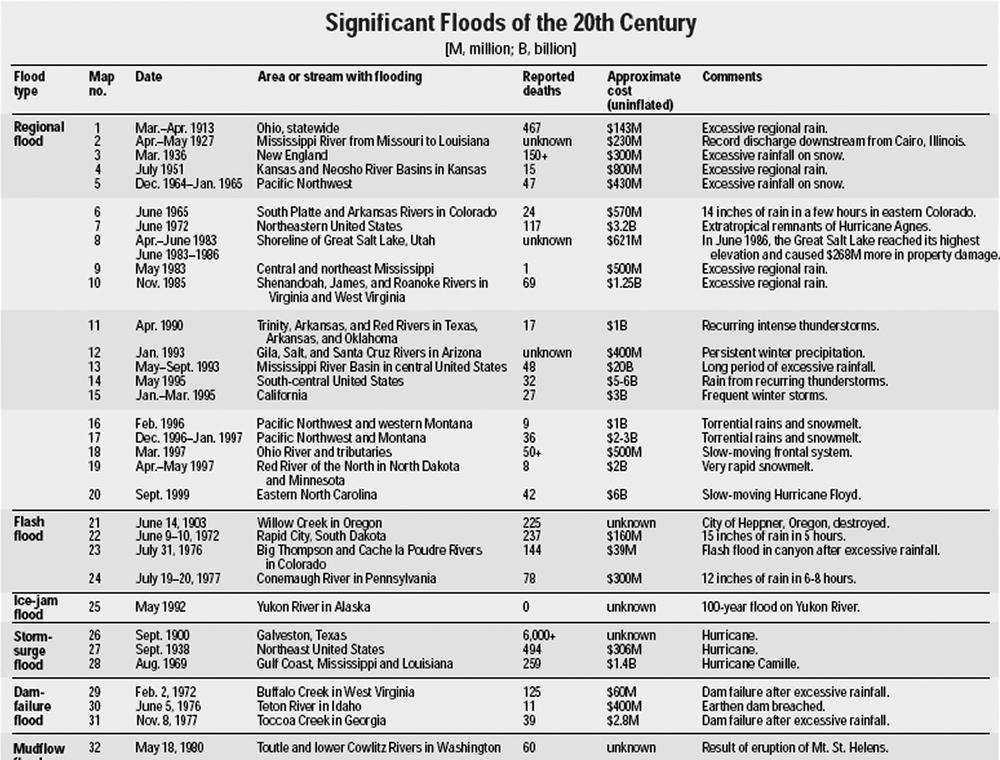Complex Data Tables
A complex data table has at least one heading that spans multiple rows or columns. The table shown in Figure 6-2 (which was taken from http://ks.water.usgs.gov/Kansas/pubs/fact-sheets/fs.024-00.pdf) is a complex table because it has both row and column headings and several of the row headings span multiple rows. For example, “Flash Flood” applies to four rows—map numbers 21–24.

Figure 6-2. Example of a complex table
Summary
A well-written summary can provide a verbal map that helps someone using a screen reader navigate the data more efficiently:
<table summary=" The table is divided into six columns: Map number, Date, Area or stream with flooding, Reported deaths, Approximate costs (uninflated), and Comments. The rows are grouped by flood types into six subcategories: Regional flood, Flash flood, Ice-jam flood, Storm-surge flood, Dam-failure flood, and Mudflow flood. "> ...
The preceding code summarizes the table with the following information:
The number and titles of the column headings
The stubhead (“The rows are...”) and subheadings
Key information
Most screen readers will announce the number of columns and rows
upon entering a table. The summary
attribute allows you to provide information about how to read the
table—information that could be useful to anyone not familiar with the
data you are presenting.
Note
Always try to avoid using the same text in both the caption ...
Get Universal Design for Web Applications now with the O’Reilly learning platform.
O’Reilly members experience books, live events, courses curated by job role, and more from O’Reilly and nearly 200 top publishers.

